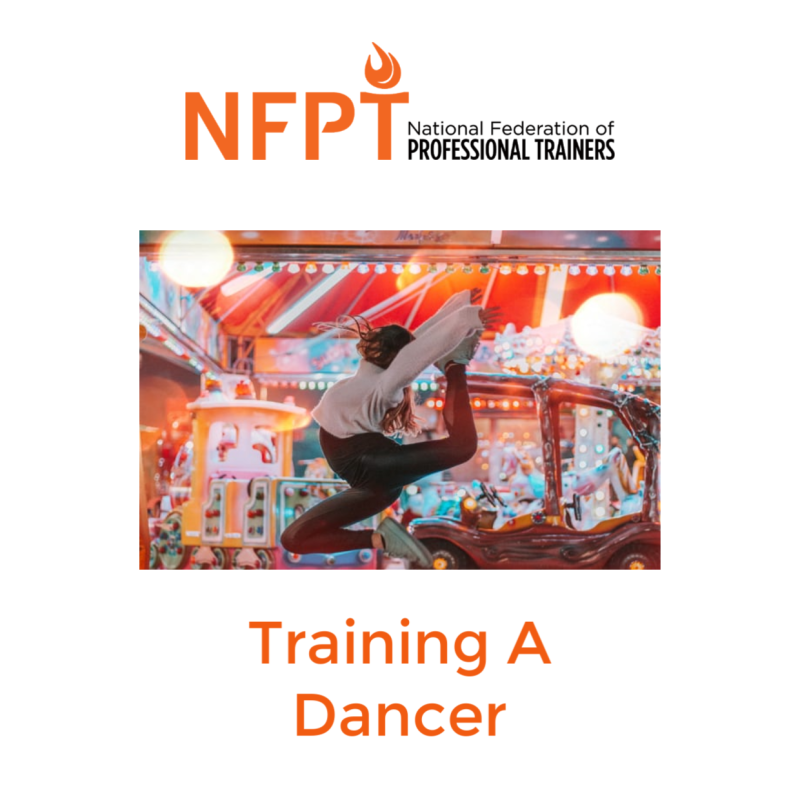
The physical brutality of dance is often obscured in subtlety and stage makeup. While dancers can make their craft look easy, any trainer who has worked with a dancer knows there is elite strength and mobility required to dance well. What exactly does a dancer need to do in the gym in order to improve their performance in the studio?
Dance is an athletic feat beyond some’s understanding. The pinpoint precision, the unearthly flexibility, combined with the strength to withhold one’s entire body on the tips of their toes. It is truly astonishing. Professional dancers are of the highest degree of athletes but categorized in the performing arts. This label that often undermines their physical prowess.
Dance, especially classical Ballet, is meant to appear effortless. It is this appearance that has also fooled observers to believe it isn’t actually that hard. So let me tell you, it is, incredibly hard. I have participated in many physical endeavors, and to this day, dance remains one of the most challenging.
What’s the difference?
Many trainers have worked with sports athletes and are familiar with the training requirements. Like the standard sports athlete, dancers need power and agility training, as well as endurance. The difference in training requirements of dancer athletes and sports athletes are not monumental, mostly just specific. It is the graceful/controlled quality, extreme flexibility, and specialty technique that moves it away from traditional sports training.
External Rotation
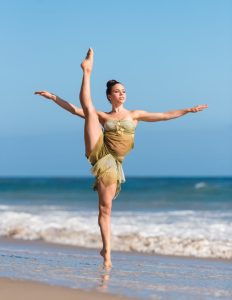 All forms of dance will require its dancer to perform significant external rotation of the hips and feet, and some more than others. Classical Ballet for example will have every position originate from and maintained in external rotation of the hips/legs. Whereas Modern dance will exhibit more parallel positions of the legs and feet.
All forms of dance will require its dancer to perform significant external rotation of the hips and feet, and some more than others. Classical Ballet for example will have every position originate from and maintained in external rotation of the hips/legs. Whereas Modern dance will exhibit more parallel positions of the legs and feet.
While the human body is certainly capable of external hip rotation, it is not a very natural position. The degrees of rotation that is asked of dancers is considerable, at least 90 degrees of each foot/leg. The greatest consideration of a dancer’s rotation is that the rotation seen in the feet is truly originating from the hip joint and NOT the knees. Dancers will torque on their knees (usually unaware) to increase the desired position of the feet, creating long term damage of the joint.
Back Strength and Flexibility
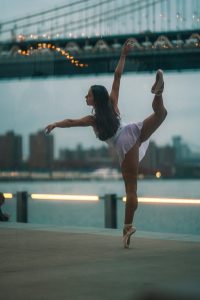
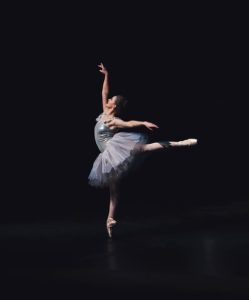
The next aspect of dance training differing from traditional sports training is the range of movement required in the posterior plane for back and hip extension. Two significant examples are Attitude and Arabesque.
Both require the dancer to maintain a squared pelvic position while extending the leg behind them as high as possible. All the while, the dancer must externally rotate the leg and is commonly holding their arms overhead and balancing on their toes.
These images are examples of Attitude (with a bent leg) and Arabesque (with a straight leg).
Ankle mobility and strength
The last significant training requirement which is specific to dance, and especially ballet, is the ability to perform extreme plantar- and dorsiflexion passively and actively. Yes, any athlete needs general ankle mobility and strength. But dancers are required to “Relevé ” in the traditional external rotation of dance in pointe shoes.
It is a movement that no other sport does, where the dancer pushes the weight of their body onto the tips of their toes; for professional dancers, this 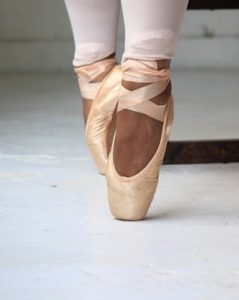
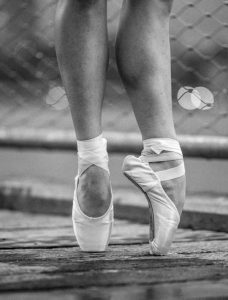 is usually done on one foot. Pointe shoes literally have a “box toe” made from either layers of fabric and cardboard or layers of hardened paper with glue. They are stiff and unyielding, and no joke to try and push up and over on to.
is usually done on one foot. Pointe shoes literally have a “box toe” made from either layers of fabric and cardboard or layers of hardened paper with glue. They are stiff and unyielding, and no joke to try and push up and over on to.
There is a term in ballet called “Getting over the shoe” such as in this first photo. This term is referring to the extreme plantar flexion of the ankle to achieve this position.
When a dancer is young and still learning and gaining the required strength and mobility, it can look a lot like this second photo.
There is also the consideration that a dancer isn’t just doing the highest ankle raise possible, but also doing it with the desired technique.
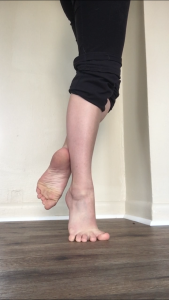
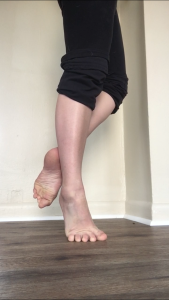
The first photo demonstrates the correct position where most of the weight pushes into the medial side of the foot and ankle, while still in external rotation. This is also known as “winging” in the dance world.
This position creates a more aesthetically pleasing line unlike this second photo in which I am “sickling”. The weight is falling into the lateral side of the foot and ankle (supinating), which is what most young dancers will do in the early stages of their training. This is simply because the ankle has a greater range of motion in this direction and it’s easier to raise the heels in a supinated position.
Dancer Exercises
Dancers are endurance athletes and require a higher rep range for these particular exercises. Because these exercises are activity-specific and training the dancing musculature, use a rep range of 12-20 for each of these following exercises. At least three sets for all.
To Strengthen “Winging”
Thess movements will strengthen the plantar flexors and evertors to prevent sickling and strengthen winging.
Exercise 1 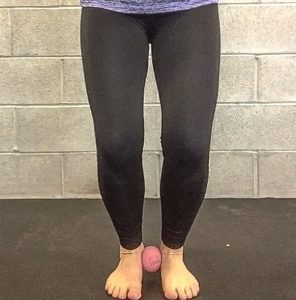
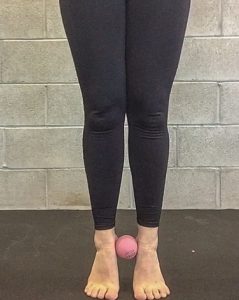
- In bare feet, have the dancer stand with their feet in a parallel position
- Place a tennis or small ball between their feet just below the medial malleolus
- Holding the tennis ball in place have the dancer perform a plié to a relevé
It’s important to note that a plié in the dance world does not allow the dancer to push their hips back as seen in a traditional squat. Ultimately when lowering into a plié, a dancer’s pelvis must strictly move up and down. This is where the passive dorsal flexion comes into play. The more flexibility in the Achilles and soleus, the lower a dancer can go.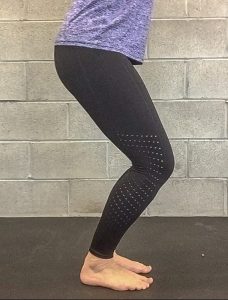
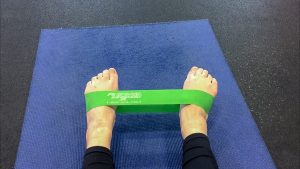 Exercise 2
Exercise 2
- Have the dancer seated with both legs extended in front
- Place a looped resistance band around both feet
- Using one foot as the anchor, have the dancer perform the winging or lateral motion of the ankle against the resistance band.
To Strengthen and Balance Supinators
It’s important to not only strengthen the pronating muscles of the foot and ankle, but also the supinating muscles, such as posterior tibialis (which also incidentally is a plantarflexor). This will improve muscular balance of the ankle joint and reduce the chance of ankle injuries. This same exercise can be applied in reverse.
- In a seated position with legs extended, cross one leg over the other
- Placed the looped band around both feet
- Using the bottom foot as the anchor the top foot will push against the band creating the sickling motion or supination
For Ankle Strength
- Have dancer stand with balls of feet on edge of stair or ledge
- Holding weight in both hands at side of body (Kettle Bells/Dumbbells etc)
- Allow heels to drop down as far as possible
- Raise heels slowly with a pause at the top
- Lower heels slowly and repeat
- Repeat same exercise on one foot
This should be done in both a parallel position and an externally rotated position known as first position. With the external rotation it’s easier for the dancer to hold the weight on their shoulders, or in just one hand of the non-working side.
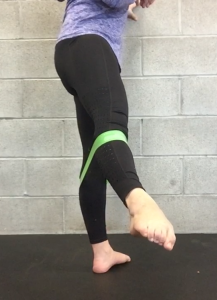
Dancer Hip External Rotation 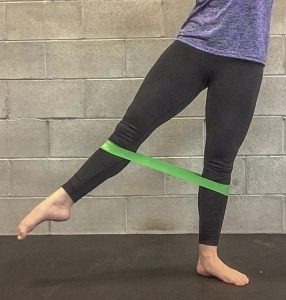
- Place a looped resistance band around both the legs anywhere between the ankles and knees. The closer to the ankle the more challenging the exercise
- Have the dancer stand in first position, legs turned out and heels touching
- Instruct the dancer lift one leg against the band pausing for a second at the highest point of extension, being sure the knee and hip remain turned out
- Have the dancer mimic the Dégagé move so the exercise is directly related to their “sport”
- Dégagé is French, like most ballet terms, and directly translates to “Disengage”. The leg that is lifting is disengaging from its counterpart. This move looks exactly what is being demonstrated in the image. The dancer will quickly lift one, straight leg, with their foot pointed. Find the pause at the end of the movement to train the external rotation.
- This exercise should be done in all directions: front, side and back.
Dancer Back Strength
- Have the dancer lie prone with the legs and feet externally rotated as if they were in first position
- Anchor their feet for them
- With their arms overhead (fifth position), have them lift the torso as high as they can and pause at the top
- When paused at their fullest back extension have them lower their arms to shoulder height (second position) and then pull them back up overhead
- The dancer will lower the torso back down, and that is one rep
- For added intensity the dancer can hold 3-5 lbs. dumbbells in their hands.
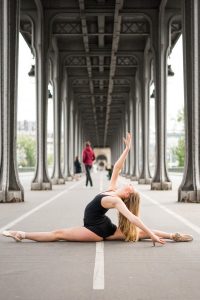 A professional dancer’s athleticism and grace is astounding, as well as their body awareness. As trainers, we’re often working with the general public to improve general fitness and functional movement for daily life activities. It is always a treat when we get to work with athletes. Yet, working with an individual who does an activity you’re not familiar with can be intimidating. If you have the chance to work with a dancer these exercises are a great starting point to help hone their skills and performance, and assure them that you are knowledgeable enough to help them continuously improve.
A professional dancer’s athleticism and grace is astounding, as well as their body awareness. As trainers, we’re often working with the general public to improve general fitness and functional movement for daily life activities. It is always a treat when we get to work with athletes. Yet, working with an individual who does an activity you’re not familiar with can be intimidating. If you have the chance to work with a dancer these exercises are a great starting point to help hone their skills and performance, and assure them that you are knowledgeable enough to help them continuously improve.





